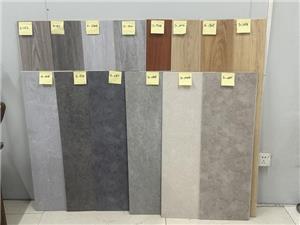SPC stone plastic flooring, as an emerging floor decoration material, is full of advantages and challenges
SPC stone plastic flooring, as an emerging floor decoration material, has the following advantages and challenges:
Advantages:
Environmental friendliness: SPC stone plastic flooring does not use glue during the production process, so it does not contain harmful substances such as formaldehyde and benzene. It is a truly zero formaldehyde green and environmentally friendly flooring that is harmless to human health.
Wear resistance: Due to the high-density base layer composed of natural stone powder used in SPC stone plastic flooring, the surface is covered with ultra strong wear-resistant polymer materials, which makes it have good wear resistance.
Waterproof and moisture-proof: SPC stone plastic flooring has excellent waterproof and moisture-proof performance, suitable for use in damp environments such as kitchens and bathrooms.
Easy maintenance: SPC stone plastic flooring is easy to clean and maintain, without the need for special maintenance, saving maintenance costs in the later stage.
In terms of challenges:
Market awareness: Although SPC stone plastic flooring has many advantages, its popularity in the market is still relatively low compared to traditional flooring materials, and it is necessary to improve consumer awareness through market promotion.
Intense competition: There are various types of flooring materials in the market, and SPC stone plastic flooring needs to stand out among many competitors, which requires continuous product innovation and marketing strategies.
Cost issue: Although SPC stone plastic flooring has the advantages of environmental protection and durability, its production cost may be relatively high, which may affect its market competitiveness.
Technological development: With the continuous progress of technology, SPC stone plastic flooring needs to constantly innovate in order to maintain its leading position in the market.
Overall, SPC stone plastic flooring has a certain competitive advantage in the building materials market due to its environmental protection, wear resistance, waterproofing and other characteristics. However, in order to achieve wider market penetration, it is also necessary to face and solve challenges such as increasing market awareness, responding to fierce market competition, controlling production costs, and continuous technological innovation.




